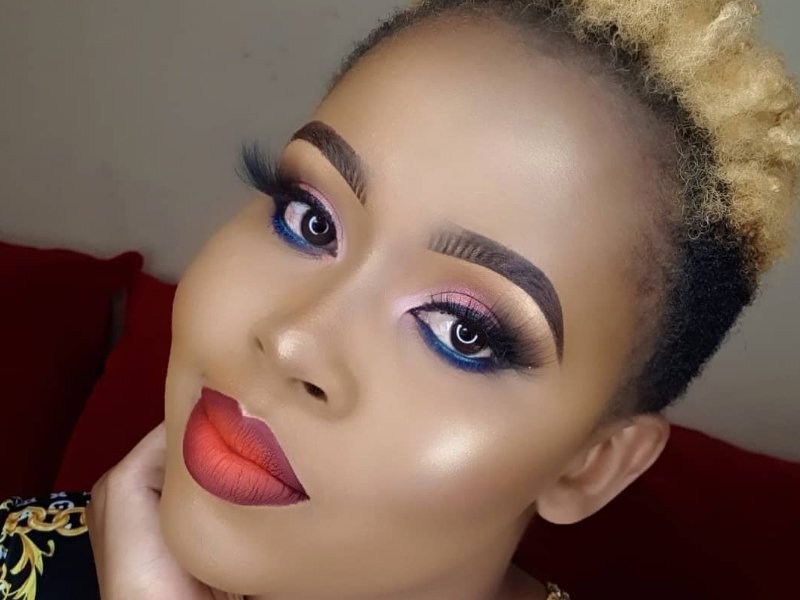Table of Content
If you’re vegan or allergic to bees, candelilla wax is a good substitute for beeswax. You should be able to find this at most health food stores, but it is also easily accessible online. Gently lift the lipstick tube as you twist the holder back into the tube. The holder should attach to the bullet-style lipstick and bring it back into the tube with it.
Now its to use give a natural look to your lips by using homemade natural lipstick which you easily find in your kitchen or grocery store. Lipstick is a popular cosmetic applied to the lips to enhance lip color. It contains various oils, pigments, and waxes that not only create different color options but often at times also protects the lips. Lipstick is found in the form of a liquid with an applicator brush or a stick within a tube. Add your pigments to the melted oil and wax mixture.
Using Crayons
Crayons have not been tested for regular long-term use on the lips, and are thus not considered 100% safe. Making your own lipstick is a great way to ensure that you know what’s in your makeup. It also lets you make custom colors suited perfectly to your skin tone. You can find most of the materials to make your own lipstick at craft and health food stores.
When ready, pour the new shade of lipstick into a small cosmetic pot or tin. Allow the lipstick to cool and harden before use.Apply the new lipstick using your finger or an applicator brush. Find an old eyeshadow in the form of either loose or compacted powder, rather than a gel form. Once the mixture has been blended well, add your color of choice selected from the beetroot powder, etc. If you combine pigments, you might like to blend them together in a coffee grinder or with a mortar and pestle.
How to Keep Lipstick Last Longer
Be careful when adding flavours to your lipstick. If you have sensitive lips, flavors could irritate your skin. If this is a concern but you’d still like to try a flavor, just add a very small amount so that the flavor is mild. WikiHow is a “wiki,” similar to Wikipedia, which means that many of our articles are co-written by multiple authors. To create this article, 73 people, some anonymous, worked to edit and improve it over time. This article has been viewed 848,928 times.
As there is also a simple solution to it. Vegan-friendly alternatives to such pigments include anthocyanins , beetroot, and lycopene. Note that carmine and some other red pigments are derived from cochineal insects such as beetles. If you’re making lipstick as gifts or to sell, wear gloves. That way, you won’t contaminate the lipstick with any bacteria that might be on your hands. Allow the mixture-filled moulds to cool in the refrigerator for 1 hour.
The Best Homemade Natural Lipstick Recipes
Mix in about 1/4 tsp of pigment at a time, stirring the mixture quickly as you add the pigment to ensure that it’s well blended. Alternatively, you can melt the lipsticks together in a double-boiler instead of a microwave. Consider adding about 1 tsp of beeswax or petroleum jelly for every 4 inches of lipstick used, as doing so will add a moisturizing effect to the lipstick. A popular DIY lipstick is made by melting crayons into coconut oil. Although crayons are non-toxic, Crayola has warned against using crayons on the lips.

Do not use oil pastels or other professional art supplies, since these are not regulated in the same way as children's crayons. Are you excited to try your hand at making your own lipstick? You probably already have the ingredients you need at home. Making lipstick yourself cuts down on makeup costs and allows you to create a rainbow of custom colors that you'll never see another person wearing.
Featured Articles
Use broken crayons you already have lying around or buy a brand new box just for the purpose of making lipstick. You'll need one crayon per tube.Choose a crayon brand that is known to make crayons that are safe to ingest in small quantities. Since kids often put crayons in their mouths, many brands are tested to ensure they aren't toxic. Choose a box of crayons that is labeled as such.
Doing this can help keep the color evenly distributed once it’s blended with the oil and wax. The synthetic lipsticks we apply on daily basis are accidentally licked into mouths and needless to say that the chemicals-induced lipsticks aren’t safe to be eaten. So, today I’m going to share with you the recipe to make all-natural DIY Lipstick at home devoid of toxins, chemicals, and preservatives. Take out the ingredients from the stove and briskly stir in a few drops of your choice’s essential oil for a touch of fragrance and nourishment.
There are many natural substances that can be used to create a variety of red, pink, brown, and orange hues. Remember that this lipstick recipe is natural, so the colors you'll look subtle and earth-toned. By changing few ingredients you can make matte finish or glossy lipstick with hundreds of shades such as red, black or desired colored you love.

Even you can easily carry while travelling in your bag. Pour the lipstick into a tin or tube and allow it to cool. Using a small knife or spoon, transfer the lipstick to a small container with a lid. Beeswax is commonly found in cosmetics and skincare products and is a fantastic way to moisturize the skin. It can help protect and repair dry, rough, or chapped skin because it can lock in moisture. Inorganic/mineral pigments (e.g. oxides and micas) generally last longer than organic (e.g. plant material) ones, but they are not as vibrant.

No comments:
Post a Comment